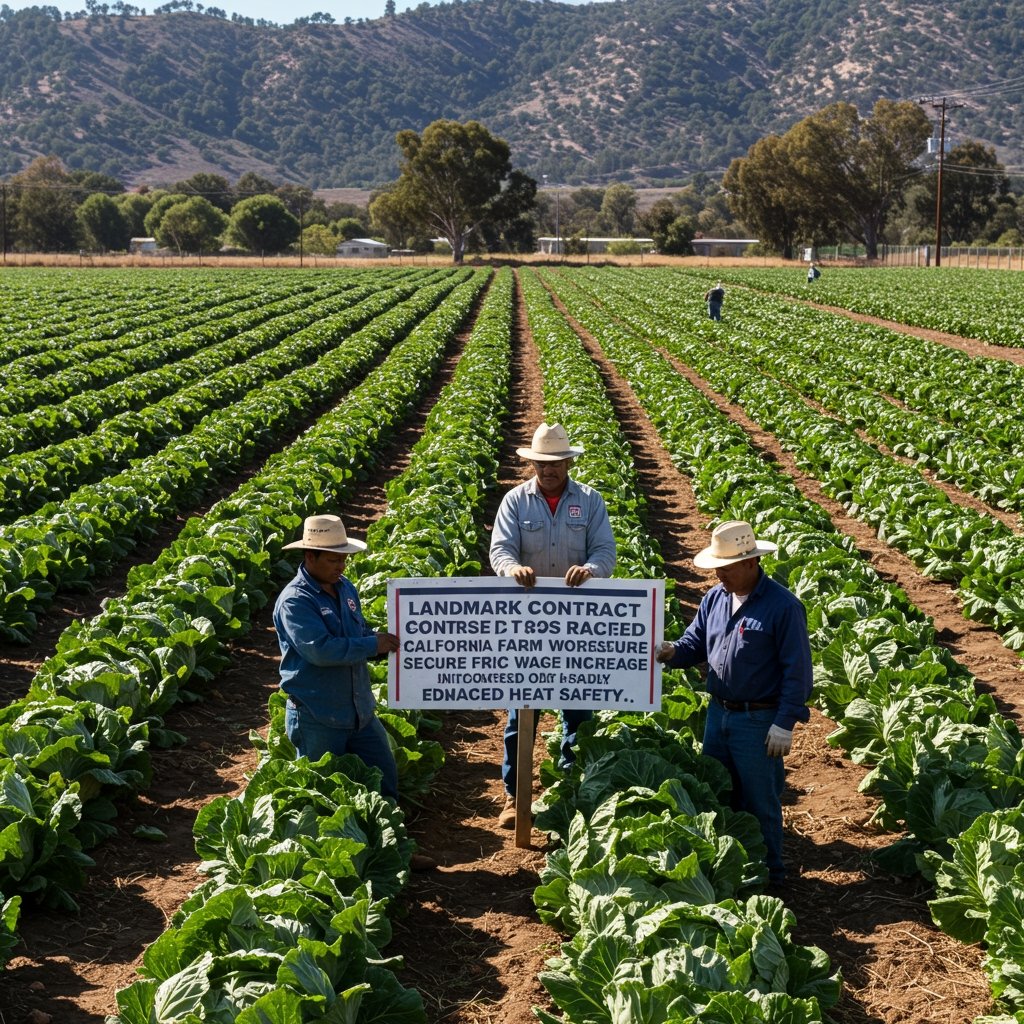Historic Agreement Reached: California Farm Workers Win Landmark Contract
SACRAMENTO, CA – After weeks of intense and sometimes fraught negotiations, a watershed moment for agricultural labor relations in California was reached this week. The United Farm Workers (UFW) and the California Fresh Fruit Association announced a tentative agreement on Monday, May 19th, 2025, which was subsequently ratified by union members the following day, Tuesday, May 20th, 2025. This landmark three-year contract is set to profoundly impact the lives and livelihoods of over 25,000 agricultural workers, primarily concentrated in the state’s vital Central Valley.
Key Provisions: Wages and Worker Protections
The centerpiece of the newly ratified agreement is a significant economic gain for farmworkers. The contract mandates a phased 15% increase in the minimum wage for covered employees over its three-year term. This substantial wage hike represents a direct response to long-standing calls for improved compensation for the laborers who form the backbone of California’s multi-billion dollar agricultural industry. Union representatives highlighted that this increase is crucial for providing workers with a more livable wage in the face of rising costs.
Beyond the monetary gains, the agreement also includes critical non-wage provisions aimed at enhancing worker safety and well-being, particularly in the face of California’s increasingly extreme summer temperatures. A key victory for the UFW was the inclusion of new, stringent heat safety protocols. These mandates specifically require employers to provide mandatory shade breaks for workers when temperatures exceed 95°F. Furthermore, the contract guarantees increased access to cool, potable water throughout the workday. These heat safety measures have been a persistent demand from the UFW, citing the health risks associated with prolonged exposure to high temperatures during strenuous fieldwork.
Averted Strike and Union Reaction
The successful negotiation and ratification of this contract averted a potential strike that loomed over the late spring and early summer harvest season. Such a labor stoppage could have caused significant disruption to the production and distribution of numerous crops, impacting supply chains and potentially leading to economic losses for growers and consumers alike. The resolution underscores the commitment of both parties to find common ground despite divergent interests.
UFW President Maria Rodriguez hailed the agreement as a historic win for farmworkers. In a statement following the ratification, she emphasized the dedication and perseverance of the union members throughout the negotiation process. “This contract is a testament to the power of collective bargaining and the unwavering spirit of our farmworker community,” Rodriguez stated. “The wage increases will provide much-needed economic relief, and the heat safety provisions will ensure that our members can work in safer conditions. This is a monumental step forward for agricultural labor rights in California.”
Industry Response and Economic Implications
While the agreement was celebrated by the union, industry analysts have begun to assess its potential economic ramifications for agricultural businesses. Projections suggest that the mandated wage increases, coupled with the costs associated with implementing enhanced heat safety measures, could collectively raise labor costs for growers by an estimated 8-12%. This increase represents a significant operating expense for farms, particularly those with large workforces reliant on the affected workers.
There are concerns within the industry that these increased labor costs could eventually translate into higher prices for consumers. Produce such as strawberries and grapes, which are heavily reliant on the labor force impacted by this agreement and are key crops harvested during the late spring and summer, are among those potentially affected later this season. Industry representatives from the California Fresh Fruit Association acknowledged the increased costs but expressed hope that operational efficiencies and market conditions could help mitigate the impact on consumer prices.
Looking Ahead
The three-year duration of the contract provides a period of stability for both labor and management in the agricultural sector. For the UFW, it secures tangible gains in wages and working conditions. For the California Fresh Fruit Association and its members, it avoids immediate labor unrest and provides a clear framework for labor costs and regulations over the next three harvest cycles. This agreement is seen by many as setting a significant precedent for future labor negotiations in California’s vast and economically crucial agricultural landscape, potentially influencing discussions across other commodities and regions within the state. The implementation of the new provisions, particularly the phased wage increases and the specific heat safety protocols, will be closely monitored by workers, employers, and regulators in the months and years to come.



















